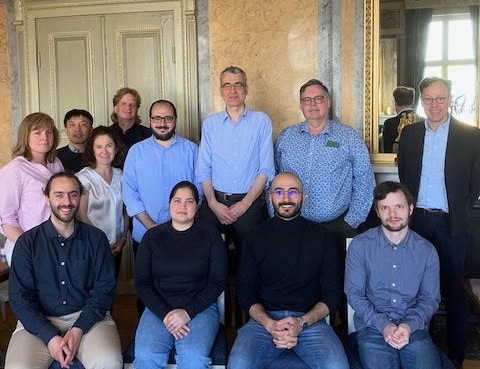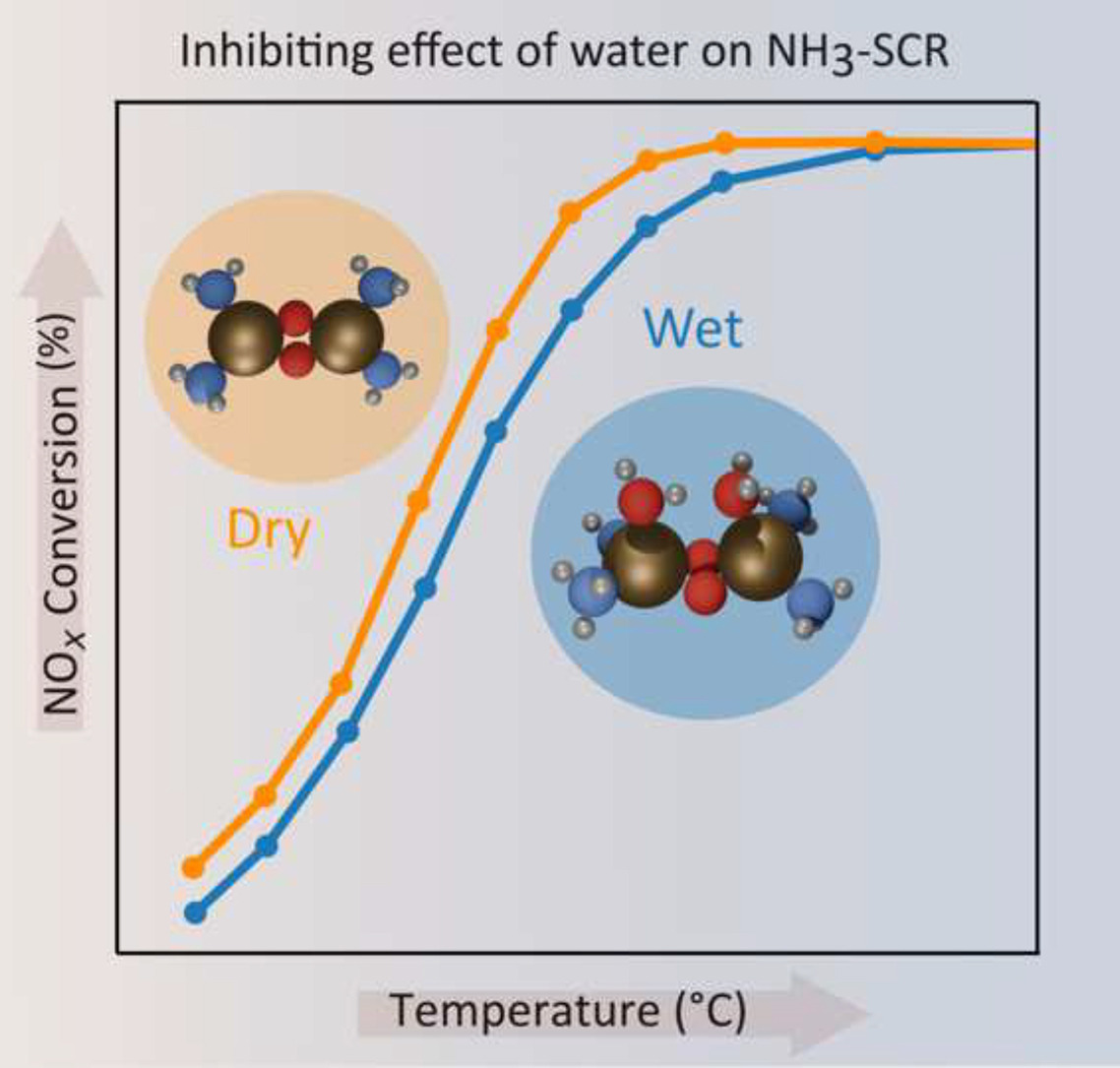Discover our results in the first publication issued within the project of CHASS! Our research has been accepted and published by the American Chemical Society Journal, The Journal of Physical Chemistry Letters
Cu-exchanged chabazite is the catalyst of choice for NOx abatement in diesel vehicles aftertreatment systems via ammonia-assisted selective catalytic reduction (NH3–SCR). Herein, we exploit in situ X-ray absorption spectroscopy powered by wavelet transform analysis and machine learning-assisted fitting to assess the impact of the zeolite composition on NH3-mobilized Cu-complexes formed during the reduction and oxidation half-cycles in NH3–SCR at 200 °C. Comparatively analyzing well-characterized Cu-CHA catalysts, we show that the Si/Al ratio of the zeolite host affects the structure of mobile dicopper(II) complexes formed during the oxidation of the [CuI(NH3)2]+ complexes by O2. Al-rich zeolites promote a planar coordination motif with longer Cu–Cu interatomic distances, while at higher Si/Al values, a bent motif with shorter internuclear separations is also observed. This is paralleled by a more efficient oxidation at a given volumetric Cu density at lower Si/Al, beneficial for the NOx conversion under NH3–SCR conditions at 200 °C.
“Assessing the Influence of Zeolite Composition on Oxygen-Bridged Diamino Dicopper(II) Complexes in Cu-CHA DeNOx Catalysts by Machine Learning-Assisted X-ray Absorption Spectroscopy“
With Andrea Martini, Chiara Negri, Luca Bugarin, Gabriele Deplano, Reza Khaleghi Abasabadi, Kirill Lomachenko, Ton Janssens, Silvia Bordiga, Gloria Berlier and Elisa Borfecchia
ESRF – The European Synchrotron

All CHASS resources are open access: Download the publication through Zenodo

